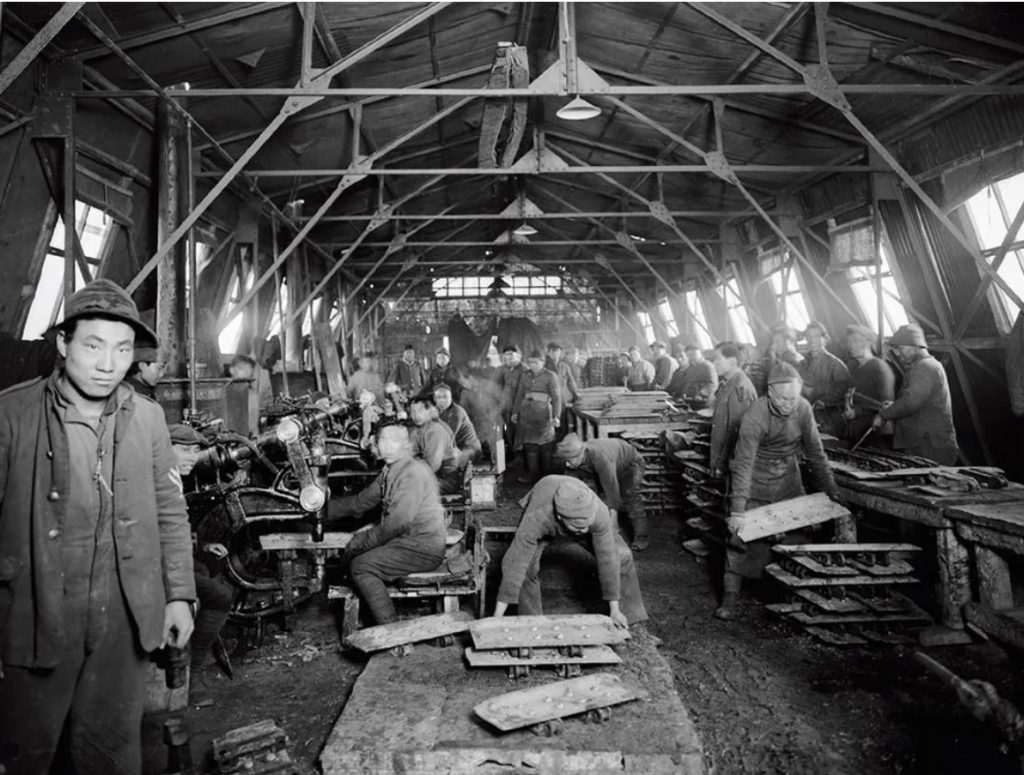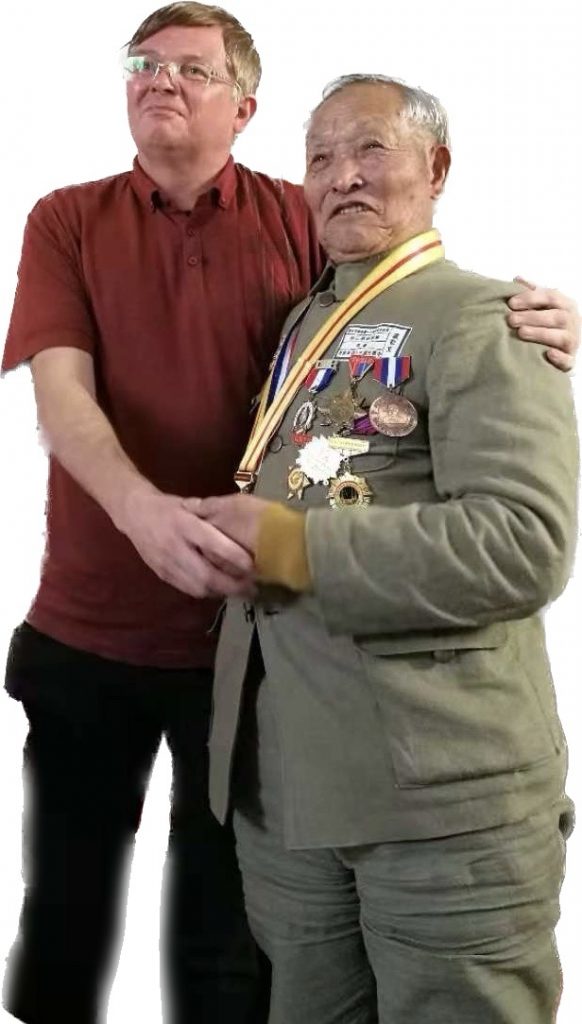
As I write this it’s May First, a national holiday in China which is known as 劳动节, Láodòng Jié or Labour Day. The traditions of Labour Day started in 1890 when the Marxist International Socialist Congress in Paris designated the day to commemorate an event in Chicago in 1886 when the police used gunfire on a crowd that was protesting in favour of an eight hour working day! A number of protestors were shot dead and many more were injured. Remembering the ‘Haymarket Martyrs’ was an inspiration for the original Labour Day. May First was declared a national holiday in China in 1949 by the new government of the People’s Republic of China.
Interestingly, May First has a long history as a holiday in Europe. Greek and Roman texts describe the start of May as a festival for the start of Spring. In England, May Day celebrations came to include the gathering of wildflowers and green branches, the weaving of floral garlands, the crowning of a May king and queen, and the setting up of a decorated May tree, or Maypole, around which people danced. There was even a superstitious belief that if you washed your face on May Day you would stay beautiful for the rest of the year!

This time of the year clearly has resonances east and west. However in this blog I want to focus not on May 1 but on May 4. This day is so important in Chinese history and culture that it even has a whole movement named after it – 五四运动, Wǔsì Yùndòng, or the May Fourth Movement. The events of May Fourth 1919 along with the founding of the Chinese Communist Party in 1921, are seen as the roots of Modern China. Let’s try to understand why Wǔsì Yùndòng is so important.
First we need a bit of background. China had become a republic on 1st January 1912 but the country had been weakened by the failure of the Qing Dynasty to modernise and by the constant interference of the colonial powers and Japan. This period is sometimes called ‘the Warlord Era’ because in the absence of effective central government local leaders all over the country seized power. You can see something of this period in the popular Chinese film ‘让子弹飞’, in English ‘Let the bullets fly’ (2010).
Then came WW1. At first China was neutral but in 1917 in order to be accepted as a modern nation, China joined the war on the side of the Allies. 140,000 Chinese labourers supported the Allied armies on the western front and as many as 500,000 contributed to war efforts in Russia. Chinese historians estimate as many as 20,000 Chinese gave their lives for the Allied cause.
After the war the Allies met at Versailles in France to design the post war world. China sent a delegation of sixty, fully expecting to be given a fair settlement which would end colonial occupation of Hong Kong by the British, of Manchuria by the Japanese and of Shandong by the Germans. The American President Woodrow Wilson was talking a lot at the Conference about national self determination.
Unfortunately the Allied powers made no such decision. In 1914 Japanese armies had seized control of Shandong and the important port city of Qingdao from Germany and now the Versailles Treaty upheld Japanese colonial rule. It was a moment of national shock. To try to make a comparison, it would be as if an international treaty gave control of Dover to the French government!
Hardly surprisingly there was an enormous outbreak of anger about this act of betrayal. On May 4th, 1919 a crowd of 3,000 protestors gathered at the Gate of Heavenly Peace in Beijing. The crowd was a mix of students from Peking University and Beijing citizens. Some even carried banners written in English to try to make sure their protests were heard in the west. The level of anger led to the burning down of a government building. Thousands of protestors were arrested.

But the crackdown on dissent was futile. The events of May Fourth in Beijing lit a fuse which spread across China. Students in cities across China joined the protest movement and forced the closure of universities. In Tianjin the future Chinese leader, Zhou Enlai, was a university student and started a newspaper to spread information about the protests. Women as well as men took to the streets. Merchants closed their shops, workers went on strike. So many arrests were made that Beijing University itself was used as a prison. It is now that we can talk about the events of May Fourth becoming a ‘Movement’. As in other popular uprisings, the events of May Fourth itself became the catalyst for expressions of popular anger with all of the problems China was suffering at that time.
May Fourth was strong enough to have both short term political influence and longer term cultural effects. The government could not afford to ignore the protests. The Chinese delegation at Versailles was ordered home and China did not ratify the Treaty. The imprisoned students were set free, pro Japanese ministers in the government were dismissed and eventually the whole cabinet resigned in the face of popular anger about their mismanagement and weakness. Finally in 1921 Japan and China signed a bilateral treaty returning Shandong to Chinese sovereignty.
The success of the May Fourth movement makes us aware that it was no a spontaneous event, ignited out of nowhere. There were voices calling for the modernisation of China throughout the nineteenth century. Even before May 4, 1919, there was already a current of social revolution going on in China which, once it came to the surface, rapidly and radically changed China’s social and intellectual landscape. There was already a commitment to a common purpose to build China into an independent and modern state. The May Fourth movement was an expression of this process of change.

The long term effects of May Fourth were even more significant. Beijing University became the centre of an intellectual movement calling for the transformation of China through national rejuvenation. The chancellor of the university was a man called Cai Yuanpei, who himself had studied in Germany, and he attracted radical thinkers to important university posts.
Among them was Chen Duxiu, who was Dean of Letters. He supported the development of a vernacular style of writing in Chinese which broke with the literary traditions of the past In an attempt to engage and empower ordinary Chinese. Chen also started a radical journal called ‘La Nouvelle Jeunesse / Xin Qing Nian or ‘New Generation’ in English – which gave a platform to progressive voices. Mao Ze Dong worked for a time in the university library, absorbing revolutionary new ideas.
The May Fourth Movement gave rise to new ideas of China and Chinese identity which found expression in the 新文化运动, Xīn Wénhuà Yùndòng or New Culture Movement. One of the foremost writers contributing to to this movement was 周树人 , Zhōu Shùrén or as he is better known by his assumed name – 鲁迅, Lǔ Xùn. After studying in Japan, Lǔ Xùn returned to China in 1909 and began to write and publish a series of literary works which relentlessly satirised the inhumanity of the corrupt China he saw around him.
One of his most famous works is called 狂人日记, Kuángrén Rìjì or ‘Diary of a Madman’, in which, amongst other terrors, it is only the madman who can see that in contemporary China, society was destroying its young people, or in the words of the novella, quite literally eating up its children. Another famous work written in 1921 is called, 阿Q正传, or Ā Q Zhèngzhuàn, ‘The True Story of A Q’, in which he savagely attacked what he saw as a Chinese national habit of turning defeats into spiritual victories and thereby weakening the national character.

From 1927 until the end of his life, Lǔ Xùn lived in Shanghai. You can visit his former residence at number 9, Shanyin Road, which is near the Hongkou football stadium. He passed away from tuberculosis. In one room of the house you can see the small desk where he used to write and next to the desk a bed where it is said, his wife slept to make sure she was always present to look after him as his health deteriorated. In the same area you can also visit Lǔ Xùn Park and in the park, a Memorial Hall to commemorate Lǔ Xùn’s contribution to Modern China.
So this May Fourth, spare a thought for the events of 1919 in Beijing. There is no doubt that the protests of students and Beijingers on that day played a significant role in China’s journey to modernity.

